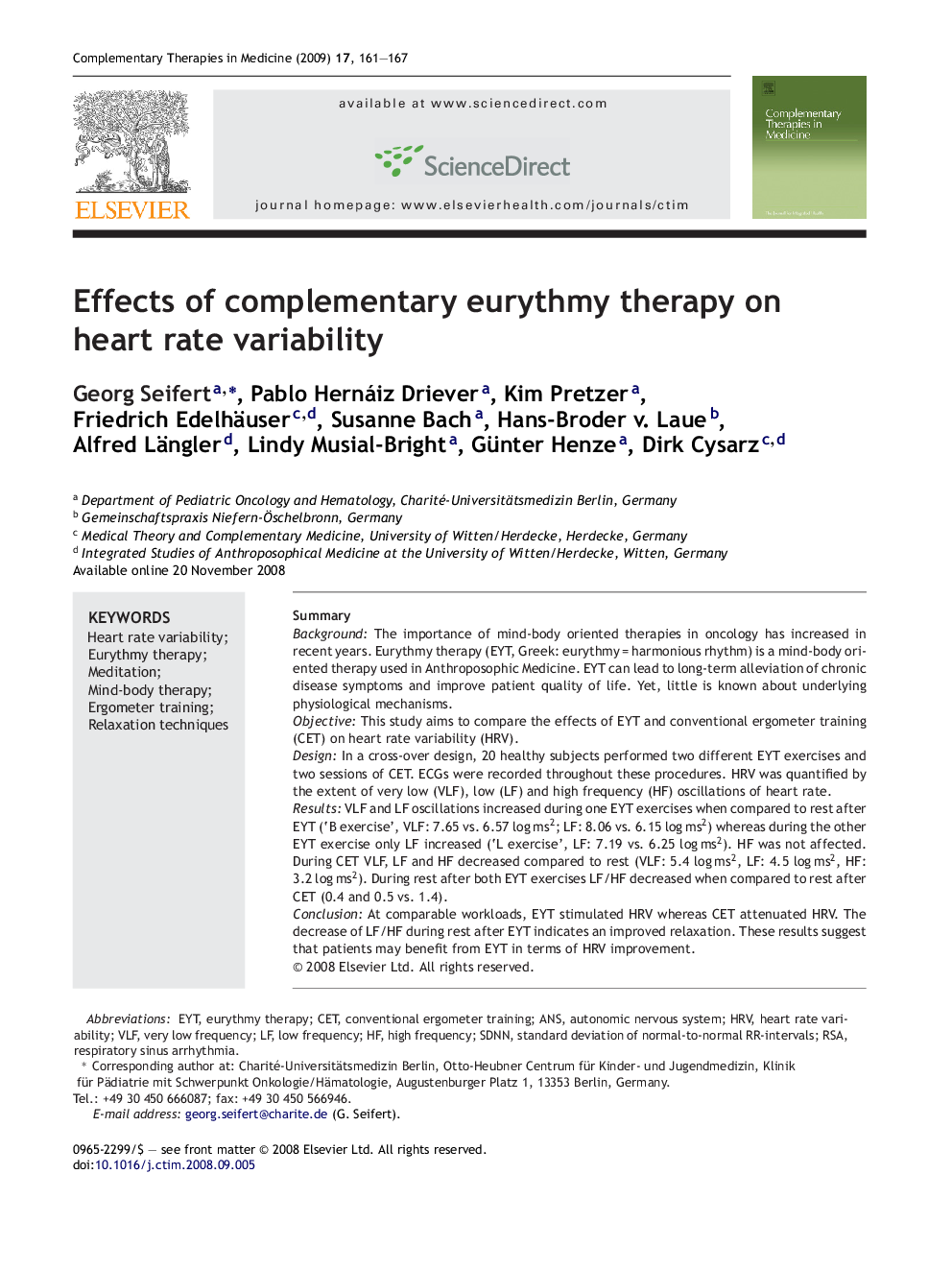| Article ID | Journal | Published Year | Pages | File Type |
|---|---|---|---|---|
| 2629534 | Complementary Therapies in Medicine | 2009 | 7 Pages |
SummaryBackgroundThe importance of mind-body oriented therapies in oncology has increased in recent years. Eurythmy therapy (EYT, Greek: eurythmy = harmonious rhythm) is a mind-body oriented therapy used in Anthroposophic Medicine. EYT can lead to long-term alleviation of chronic disease symptoms and improve patient quality of life. Yet, little is known about underlying physiological mechanisms.ObjectiveThis study aims to compare the effects of EYT and conventional ergometer training (CET) on heart rate variability (HRV).DesignIn a cross-over design, 20 healthy subjects performed two different EYT exercises and two sessions of CET. ECGs were recorded throughout these procedures. HRV was quantified by the extent of very low (VLF), low (LF) and high frequency (HF) oscillations of heart rate.ResultsVLF and LF oscillations increased during one EYT exercises when compared to rest after EYT (‘B exercise’, VLF: 7.65 vs. 6.57 log ms2; LF: 8.06 vs. 6.15 log ms2) whereas during the other EYT exercise only LF increased (‘L exercise’, LF: 7.19 vs. 6.25 log ms2). HF was not affected. During CET VLF, LF and HF decreased compared to rest (VLF: 5.4 log ms2, LF: 4.5 log ms2, HF: 3.2 log ms2). During rest after both EYT exercises LF/HF decreased when compared to rest after CET (0.4 and 0.5 vs. 1.4).ConclusionAt comparable workloads, EYT stimulated HRV whereas CET attenuated HRV. The decrease of LF/HF during rest after EYT indicates an improved relaxation. These results suggest that patients may benefit from EYT in terms of HRV improvement.
